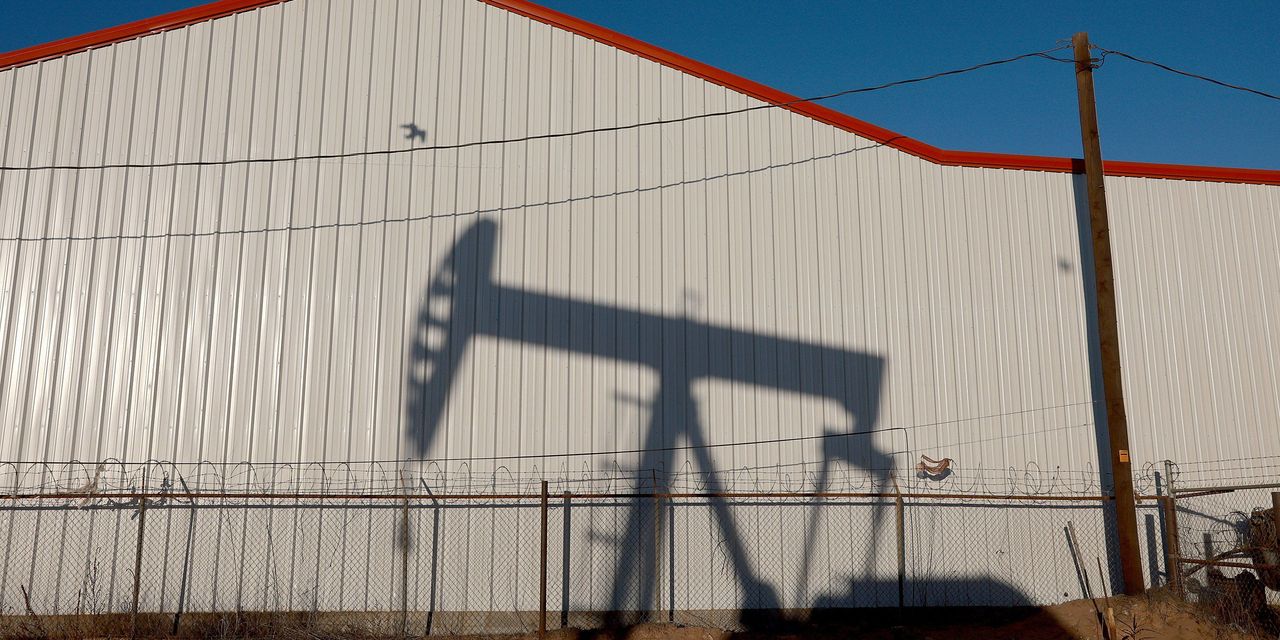Futures Movers: Oil ends higher as report says Germany ready to stop buying Russian crude

Oil futures finished higher Thursday after The Wall Street Journal reported that Germany was prepared to stop buying Russian crude, clearing the way for a European Union embargo.
Oil has seen choppy trading, with a soaring U.S. dollar weighing on commodity prices as investors also assessed worries about the impact of COVID on China’s economy.
Price action
- West Texas Intermediate crude for June delivery CL00, +3.18% CL.1, +3.18% CLM22, +3.18% rose $3.34, or 3.3%, to close at $105.36 a barrel on the New York Mercantile Exchange.
- June Brent crude BRNM22, -0.18%, the global benchmark, advanced $2.27, or 2.2%, to end at $107.59 a barrel on ICE Futures Europe. July Brent BRN00, -0.06% BRNN22, -0.06%, the most actively traded contract, rose $2.31, or 2.2%, to $107.26 a barrel.
- June natural-gas futures NGM22, -5.06% fell 6.2% to $6.888 per million British thermal units.
- June gasoline RBM22, +1.17% finished 1.8% higher at $3.476 a gallon, while June heating oil HOM22, +1.48% rose 1.8% to $4.008 a gallon.
Market drivers
German representatives to European Union institutions on Thursday lifted objections to a full embargo of Russian supplies provided Berlin was given enough time to find alternative supplies, The Wall Street Journal reported, citing government officials. Germany, with Europe’s largest economy, has been a key roadblock to an EU embargo linked to Russia’s aggression in Ukraine. The U.S. and U.K. had previously moved to end purchases of Russian oil.
Russia earlier this week cut off natural-gas deliveries to Poland and Bulgaria after those countries refused to make payments in rubles, as demanded by Russian President Vladimir Putin.
That’s raised fears Russia, hit hard by Western sanctions, could move to cut off other European countries. Meanwhile, Russian Finance Minister Anton Siluanov on Wednesday said the country’s oil output could fall 17% this year due to Western sanctions, The Wall Street Journal reported.
“The globe is in a mad scramble for energy supply as Russia, as many expected, is signaling that they will use their energy dominance over Europe as a weapon. The reverberations are being felt not only in European natural gas markets but even here at home in products like gasoline but more acutely in diesel,” said Phil Flynn, analyst at Price Futures Group.
If Russia cuts off the gas supply, “Europe will have to scramble to find alternatives and diesel is one that is already undersupplied globally.”
Upside for oil has been limited as worries over the spread of COVID-19 in Beijing triggered fears of a broad lockdown of the nation’s capital. A lengthy lockdown of Shanghai, the nation’s largest city and a commercial hub, has been a negative for crude, undercutting demand expectations.
And then there’s the dollar. The ICE U.S. Dollar Index DXY, +0.64%, a measure of the currency against a basket of six major rivals, rose to a five-year high as the Japanese yen USDJPY, +1.95% plunged after the Bank of Japan pledged to buy unlimited amounts of 10-year fixed-rate Japanese Government Bonds to defend a 0.25% yield level. The euro EURUSD, -0.50% also remained under pressure, slipping below $1.05 for the first time in five years.
Read: Dollar domination continues, as yen slumps to two-decade low
“Crude oil is having trouble gaining traction in recent days with the dollar index posting new multi-year highs on a seemingly daily basis,” said Robert Yawger, executive director of energy futures at Mizuho Securities, in a note.
“With the [U.S. Federal Reserve] poised to increase rates by 50 basis points [next week], with the possibility of a 75-basis-point increase, it would seem highly unlikely that we have seen the last of new multi-year increases in the dollar,” he wrote. A stronger dollar makes it more expensive to users of other currencies to buy dollar-priced commodities.
The Energy Information Administration said U.S. natural-gas in storage rose 40 billion cubic feet last week. Economists surveyed by The Wall Street Journal had forecast a rise of 38 billion cubic feet.

Comments are closed.